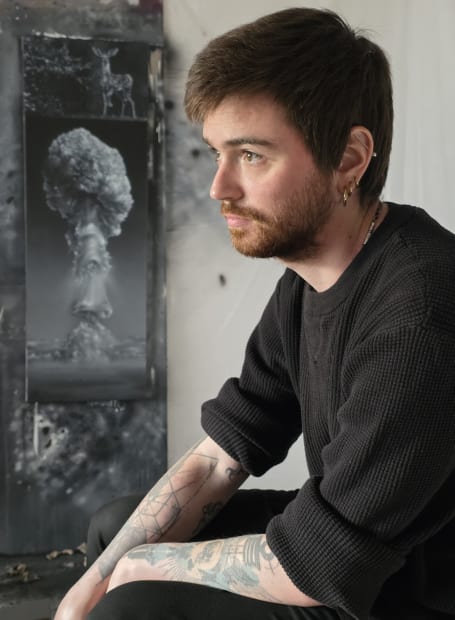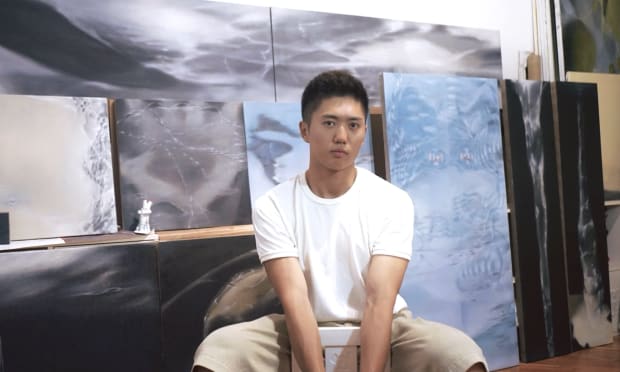-
Enari Gallery is pleased to present CLICK CLICK CLICK, a group exhibition featuring Anja Rausch, Camille Theodet, and Jingyan Ding. The three artists explore the shifting boundary between the digital and the physical through practices that merge material and virtual forms. In a time defined by the relentless gestures of clicking, scrolling, capturing, and sharing, the exhibition explores how images, forms, and identities are constructed, deconstructed, and reimagined across both virtual and material realms. Through the medium of painting, the artists contemplate the interplay between immediacy and mediation, between the tangible surface of paint and the immaterial flow of digital information.CLICK CLICK CLICK reflects on how images and technology shape our perception of reality. It reflects how the repetitive, instinctive gestures of looking and clicking transform the relationship between perspective, presence, and what we call the real.
-
PARTICIPATING ARTISTS
-

-

-

-
Anja Rausch transforms digital logic into painterly abstraction, turning data into organic forms that reveal the hidden architectures of computation. Jingyan Ding explores time, transformation, and the merging of the tangible and the illusory in meditative imagery. Camille Theodet fuses found fragments into unstable narratives of innocence, chaos, and rebirth, exposing the seductive volatility of visual culture in the age of endless reproduction. Together, the three artists unite their distinct visions in CLICK CLICK CLICK, a collaborative exploration of perception, transformation, and the digital condition.
-
Camille TheodetCharité, 2025Acrylic on canvas30 x 30 cm
-
Camille Theodet explores themes of tension, fragility, and instinct through fragmented visual narratives. Each painting unfolds as a conversation between tenderness and violence, stillness and eruption. Working with airbrushed acrylics and cinematic framing, he creates compositions that blur the boundary between reality and allegory. His imagery, combining human figures, animals, and elemental forces, evokes both intimacy and unease, reflecting on the shifting relationships between nature, the animal, and the human within a world of constant contradiction. This series captures moments of suspended tension, where beauty and danger coexist, and emotion arises through collision. Each work stands as a quiet allegory of survival and vulnerability, attuned to the primal rhythms of what it means to be human.
-
 DRACO, 2025, Oil on raw canvas, 100 x 70 cm
DRACO, 2025, Oil on raw canvas, 100 x 70 cm -
-
In one of his Untitled works, Jingyan Ding focuses on the reflection of plants upon the surface of water, using this delicate image as a metaphor to question the authenticity of existence. The reflection wavers between substance and illusion, prompting us to ask whether what we see is an actual presence or a transient mirage. Through the blurred interplay between the plant and its mirrored counterpart, the painting unsettles our perception of what is real and what is imagined. Ding constructs a visual space where the tangible and the intangible, the genuine and the illusory, are in constant flux. The work invites viewers to consider whether our experience of reality is rooted in truth, or whether, like a reflection on water, it remains a fragile surface, forever shifting, distorting, and dissolving.
Anja Rausch, Camille Theodet, Jingyan Ding, 31 October - 21 December 2025
Stay in touch with Enari
Joining the Enari newsletter is the best way to stay informed about our latest shows, fairs, and artists' news
* denotes required fields
We will process the personal data you have supplied to communicate with you in accordance with our Privacy Policy. You can unsubscribe or change your preferences at any time by clicking the link in our emails.





